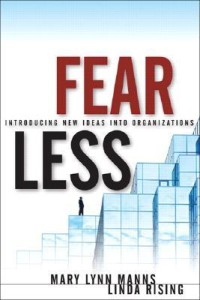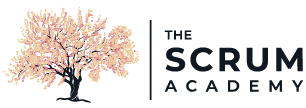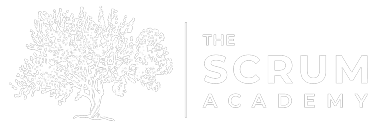Fearless Change: Patterns for Introducing New Ideas
 In a recent conversation with a friend and colleague, she mentioned that while many people leave a Certified ScrumMaster course energized and eager to implement Scrum they lack the tools to be effective in supporting change. As someone who teaches this course, I asked her what was lacking and she told me many CSM participants were lacking tools around change management. So this month, I am going to review one of the first books I read on change management by Linda Rising and Mary Lynn Manns, Fearless Change: Patterns for Introducing New Ideas.
In a recent conversation with a friend and colleague, she mentioned that while many people leave a Certified ScrumMaster course energized and eager to implement Scrum they lack the tools to be effective in supporting change. As someone who teaches this course, I asked her what was lacking and she told me many CSM participants were lacking tools around change management. So this month, I am going to review one of the first books I read on change management by Linda Rising and Mary Lynn Manns, Fearless Change: Patterns for Introducing New Ideas.
The first chapter of this book identifies the three elements one should consider when fostering change or innovation – the change agent, the organizational culture and the people who will participate in the change. All successful change agents have three things in common: a passionate belief in the idea they are advocating, a drive to see that idea be successful in the organization and some strategies to share the idea with others. The change agent is the most powerful and important element of change because without an individual who has a vision that things can be better, the whole process of change does not even begin. Every great social movement – take your pick – began with one person saying, “We can do this better and I have an idea on how to do it.”
Culture is also an important consideration when introducing a new idea to an organization or a Team. If the culture of the organization supports new ideas and innovations, then the idea will spread more rapidly. If the organization is generally conservative to new ideas and innovations, or “too busy” to support new ideas, then one must set their expectations appropriately, have a great deal of patience and take a long view with respect to change. Change will happen, but will take much longer.
Finally, in order to sustain change we need to invite people to participate in the change and perhaps change something about themselves and\or they way they interact with others in the organization. Depending on the attractiveness of the new idea and a person’s allegiance to the idea you are trying to replace, encouraging people to participate in your new idea can be quite challenging. While Rising and Manns provide a brief overview of Innovators, Early Adopters, Early Majority, etc. from E.M. Rogers’s Diffusion of Innovation*, the key point here is be flexible in your approach with people and tailor your responses to individuals based on where they are in supporting the new idea.
Chapter Two offers a description of the structure of the patterns (both women were early contributors and researchers supporting the development and application of software patterns in the late 1990’s). In addition, this chapter explains how to leverage pattern thinking to human interactions. Chapters Three to Twelve offer specific collections of patterns to use based upon where you are with introducing your new idea or innovation. This will bring you to the end of Part One of the book.
Part Two provides experience reports on how the change patterns were used to bring about a new idea, change or innovation in four different organizations. In Part Three, the authors list all forty-eight patterns they identified with detailed explanations of the patterns. Fearless Change closes with a useful Appendix that gives advice on when to use a pattern and a short summary of the pattern. On their website , they even have a PDF of all the patterns on index cards.
While the description of the patterns in Part Three are the heart of this book and contain over fifty percent of the content, I feel another important element of the book are Chapters Three to Twelve where the authors group the patterns based on the stepwise progression of how an idea normally progresses in an organization. In the description below, I will highlight the change patterns I have found most helpful in CAPITAL LETTERS, but I encourage you to review all the patterns contained within the book.
- Where Do I Start? – quite simply you must start as the Evangelist and achieve Small Successes. In this context, an Evangelist is the person who is really passionate for the idea and you must allow that passion to drive you to share with others why the idea is something important. My only caution here is that don’t overdo it when evangelizing an idea. In this world, the only people more hated than a used car salesman are evangelists who do not take “no” for an answer. Be passionate, be excited about your idea, but know when to turn it off. Know when JUST ENOUGH is really just enough. If people find your idea compelling and you have shown Small Successes, they will come to you curious about your successes.
- What Do I Do Next? – once you have started the process of change, it is time to Ask for Help. It is impossible for one person bend an entire organization to their will or create lasting change without Asking for Help. Change is a social activity and much more fun when you have allies and partners to offer new perspectives, help refine your thinking, create better solutions and share the burdens. While you should accept help from anyone who will give it, at this point make an effort to seek out the Connectors. CONNECTORS are people in your organization who touch other parts of the organization. They are valuable because they amplify the impact of your idea because their social network in the organization reaches beyond your own personal network. Remember JUST TO SAY THANKS for time-to-time. Most people who are helping you are doing so in their “spare time”, so be sure to take a moment to appreciate their contribution with kind words in private, public recognition when well-deserved and\or take them out to lunch.
- Meetings and More – in order for change to happen, people need to speak with one another which means having some type of meeting. At times, people do not like to sign-up for yet another meeting. While PIGGYBACK is the preferred option here, i.e. schedule your conversation as an agenda item to an existing meeting or gathering, I find THE RIGHT TIME to be much more powerful. Ask your helpers, “What is THE RIGHT TIME for us to talk about this topic?” When asking people to donate their “spare time” for your idea, you absolutely must DO FOOD to make your meeting special, noteworthy and a preferred meeting destination. Show people you care about them by providing something really unique, special and out-of-the-ordinary. Ask people what they like to eat and find the highest quality example you can afford. It is gestures like these which demonstrate to people you value their time and are listening to them. STAY IN TOUCH with people regularly using informal, face-to-face conversations. My recommendation is check-in with your key contributors at least once every two weeks.
- Take Action! – my favorite pattern in this collection is JUST DO IT. Believe it or not, your job duties probably give you a great deal of latitude to implement many of your ideas on your own without asking for permission. Also, when you JUST DO IT, you clearly demonstrate your belief and conviction to your idea. However, be cautious when you JUST DO IT. Sometimes people get agitated when you implement a new idea or make a change happen, especially if their boss is not convinced the idea will help. If your goal is to JUST DO IT and it requires other people to change the way they work, then I recommend that you confirm you have permission to make the change with those bosses first.
- It’s All About People – the successful application of any new idea comes down to people, their individual strengths and capacity to accept change. All change is based upon on the perception that you are a trustworthy person who will look out for other people’s interests. PERSONAL TOUCH is all about helping people understand how your idea will make a specific person’s day-to-day lives better. PERSONAL TOUCH is how you show your goal is not blast through their legitimate, often times reasonable , concerns about how your idea is going to affect them. Use these interactions to really listen to what people have to tell you about the innovation you are proposing and find ways to make your idea better. As you discuss the idea with more and more people, you may find that the time is not right for the innovation or perhaps you may have to move to a TAILOR MADE solution.
- A New Role: Now You’re Dedicated! – if the innovation you are promoting requires significant change in the way people work and interact with one another and\or the customers, eventually promoting and implementing your idea will be your full time job. If it already is your full time job, then you need the organization to recognize that your role is to be the DEDICATED CHAMPION of the idea and your previous duties will have a lower priority. In Scrum, the ScrumMaster is the DEDICATED CHAMPION of the process and organizational change. To be successful either as a DEDICATED CHAMPION (or ScrumMaster) requires, at a minimum, the permission of a LOCAL SPONSOR, i.e. your immediate boss. For your idea to have a lasting effect in the larger organization, you must have a CORPORATE ANGEL – a senior decision-maker in the business – to provide support, resources and protection. Without both a LOCAL SPONSOR and a CORPORATE ANGEL, you will never become a DEDICATED CHAMPION. It is also clearly important that your personal relationship with these two figures be very strong and that you are supporting their goals as well as advocating for the innovation you believe in.
- Convince the Masses – nothing sends the message that a new idea or innovation is important to the success of the business than executing a TRIAL RUN coupled with a BIG JOLT. A BIG JOLT is when the LOCAL SPONSOR and\or the CORPORATE ANGEL speak briefly during the kick-off about why the idea is important to the future success of the business and why it is important for them. It is exceedingly important when begin the TRIAL RUN, ensure you are setting up the experiment for success. It you dilute your idea so much that it never really had a chance to succeed, you just tied your CORPORATE ANGEL and LOCAL SPONSOR to a spectacular and massively public failure. Not only may this failure diminished your future career advancement in the organization, but you may have also diminished their future advancement. You must do everything in your power to ensure the TRIAL RUN is a success, including postponing the TRIAL RUN.
- Dealing with Resistance – resistance to any new idea or innovation is the natural state of human affairs. Human beings simply do not like change and are comfortable with the status quo. When people appear to resist an idea, it comes from a variety of sources. It can be as straight forward as clearing up a rumor or misinformation to something difficult to resolve such as the perception to the listener that you are not qualified to lead the change. My only advice is to suggest to FEAR LESS and work one-on-one with people who are not immediately on board with your idea. No idea is perfect and ask your skeptics how they might implement the idea better. While it might seem an idea should be accepted on its merits alone, often times you have to engage in organizational politics before a new idea is accepted. On the surface, there is nothing wrong, deceptive or manipulative with having informal conversations with managers and other people who might resist an idea about all their concerns and hesitations. This is called CORRIDOR POLITICS and the pattern many ScrumMasters and change agents use to great success. Spend as much time as you need with CORRIDOR POLITICS until everyone has all the accurate information available. I recommend having these conversations as private, confidential one-on-one meetings since no manager wants to appear ill-informed in front of their peers. Private one-on-one meetings like this are called WHISPERING IN THE GENERAL’S EAR. In both patterns, your goal is to help convince people to support your ideas or, at a minimum, not to block your progress.
- More Influence Strategies – these next patterns are all about sustaining and continuing the momentum of change. I cannot emphasis enough that as an EVANGELIST, or a DEDICATED CHAMPION, your job is to communicate, communicate and re-communicate the positive impact of the change you are advocating. Create formal and informal opportunities to generate a SMELL OF SUCCESS around your idea and this will draw people to participate in the change. People want to participate in an idea that has energy, excitement and executive support. Leverage a HOMETOWN STORY, told by a participant in your TRIAL RUN, to explain the impact of your idea and why it is valuable to continue. Provide visible around the idea or innovation by putting some type of physical information radiator or visual control IN YOUR SPACE to broadcast what you are up.
* For a more detailed and up-to-date explanation on Innovators, Early Adopters, Early Majority, etc. as applied to technology, be sure to read Geoffrey Moore’s , Crossing the Chasm.

